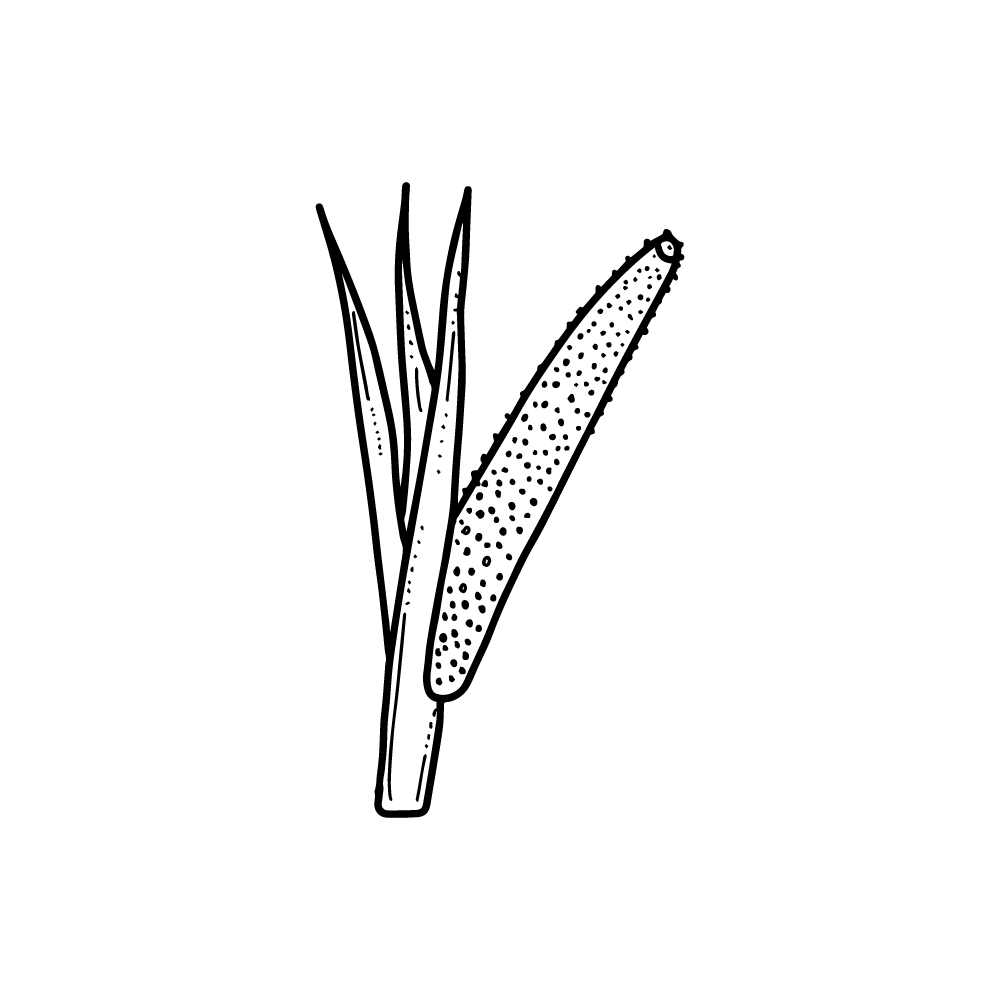Acorus Calamus vector
Acorus calamus L. herb vector, clip art in SVG and PNG. Acorus calamus L. (sweet flag, sweet calamus, drug sweet flag, sweet sedge) herb vector, clip art catalog, no background, transparent.

Acorus calamus L. (sweet flag, sweet calamus, drug sweet flag, sweet sedge)
A perennial herbaceous plant in the Araceae family, 50-125 cm tall. The rhizome is 1,5-3 cm in diameter, greenish-brown, creeping, branched, branched, with abundant adventitious roots and strong fallen leaf markings, aromatically scented, bitter, with a whiteish-pink cross-section, slightly porous. The stem is ribbed on one side and concave on the other. The leaves emerge from the apex of the rhizome, are legless, long, sword-shaped, bright green, glossy, basally grasping each other at the lower parts, often with a wavy margin. The flowers are clustered in a cylindrical, 4,5-12 cm long, laterally inclined cob. Seeds do not mature in Lithuania. Flowering June-July. Reproduces by rhizomes.
Active ingredients. The rhizome of the saddleback contains 2-9% essential oil, the glycoside acorin, the alkaloid calamine, starch, resins, 29 mg of vitamin C, traces of tannins and other substances. The essential oil composition (which is variable) contains 1% d-pinene, 7% d-camphene, 8.7% d-camphor, 3% borneol, eugenol, azaron, calomol, calamene, calamene, calacoren, caryophyllene, guaiene, acorne and others. The leaves contain essential oil, tannic substances, up to 500 mg of vitamin C. The essential oil of Ayer is thick, yellow, pleasant smelling, bitter.
Preparation. The rhizomes of the saddle-leaved ryegrass (Calami rhizoma) are dug in spring or autumn. No more than 1/4 of the rhizomes from the existing area may be harvested, and the same area may be replanted after 5-8 years. The rhizomes are lifted out with forks or shovels. They are then washed thoroughly, the fine roots and leaves are cut off and the leaves are wrapped. They are then cut into 5-30 cm long pieces, and when very thick, they are washed lengthwise and laid out in a warm, well-ventilated room or in a tin shelter. Drying takes place in a warm, well-ventilated room or in special drying racks at a temperature of 30-35 °C. The bark is peeled off and the rhizomes are wrapped around the stems. The dry weight of 1 kg of raw, unpeeled rhizomes is 250-280 g and 220-40 g of peeled rhizomes. After drying, the pieces of rhizome must remain white, yellowish, greenish or reddish in colour, with a characteristic aril smell and bitter taste. The raw material is stored in a dry, well-ventilated place in bundles. Suitable for consumption up to 2 years.
Usage. The decoction of the rhizome is taken orally in case of indigestion, loss of appetite, convalescence after influenza, kidney stones and wounds. The Ajero powder is used to clean the teeth, thus strengthening the gums and eliminating unpleasant breath. The rhizomes are also used in aromatic baths, to prevent hair loss (to fight dandruff, strengthen and lighten hair), in the perfumery industry, and in the production of liqueurs and other drinks.
Dried rhizomes are used to make tinctures, extracts and powders.
Contraindications. Large quantities of aira may increase bleeding during menstruation. Do not use on dry skin.
Information source: https://en.wikipedia.org/wiki/Acorus_calamus